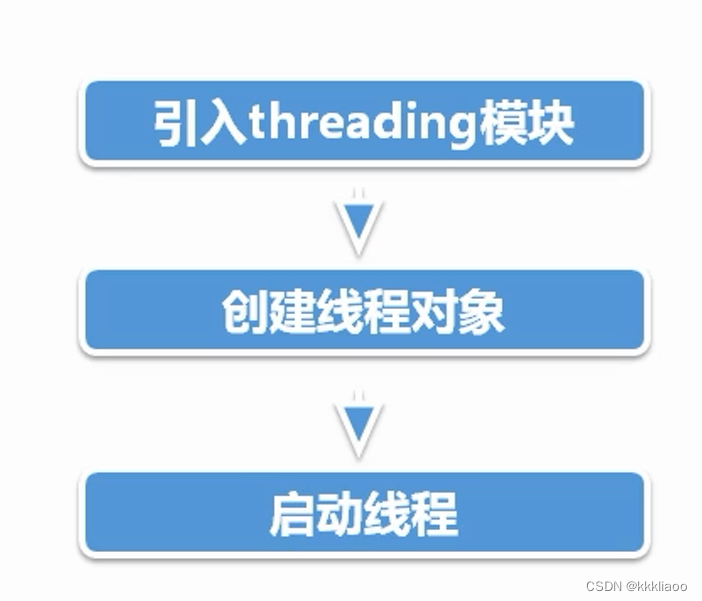在javaweb项目中进行MD5加密
package cn.itcast.elec.util;
/*******************************************************************************
* keyBean 类实现了RSA Data Security, Inc.在提交给IETF 的RFC1321中的keyBean message-digest
* 算法。
******************************************************************************/
public class MD5keyBean {
/*
* 下面这些S11-S44实际上是一个4*4的矩阵,在原始的C实现中是用#define 实现的, 这里把它们实现成为static
* final是表示了只读,切能在同一个进程空间内的多个 Instance间共享
*/
static final int S11 = 7;
static final int S12 = 12;
static final int S13 = 17;
static final int S14 = 22;
static final int S21 = 5;
static final int S22 = 9;
static final int S23 = 14;
static final int S24 = 20;
static final int S31 = 4;
static final int S32 = 11;
static final int S33 = 16;
static final int S34 = 23;
static final int S41 = 6;
static final int S42 = 10;
static final int S43 = 15;
static final int S44 = 21;
static final byte[] PADDING = { -128, 0, 0, 0, 0, 0, 0, 0, 0, 0, 0, 0, 0,
0, 0, 0, 0, 0, 0, 0, 0, 0, 0, 0, 0, 0, 0, 0, 0, 0, 0, 0, 0, 0, 0,
0, 0, 0, 0, 0, 0, 0, 0, 0, 0, 0, 0, 0, 0, 0, 0, 0, 0, 0, 0, 0, 0,
0, 0, 0, 0, 0, 0, 0 };
/*
* 下面的三个成员是keyBean计算过程中用到的3个核心数据,在原始的C实现中 被定义到keyBean_CTX结构中
*/
private long[] state = new long[4]; // state (ABCD)
private long[] count = new long[2]; // number of bits, modulo 2^64 (lsb
// first)
private byte[] buffer = new byte[64]; // input buffer
/*
* digestHexStr是keyBean的唯一一个公共成员,是最新一次计算结果的 16进制ASCII表示.
*/
public String digestHexStr;
/*
* digest,是最新一次计算结果的2进制内部表示,表示128bit的keyBean值.
*/
private byte[] digest = new byte[16];
/*
* getkeyBeanofStr是类keyBean最主要的公共方法,入口参数是你想要进行keyBean变换的字符串
* 返回的是变换完的结果,这个结果是从公共成员digestHexStr取得的.
*/
public String getkeyBeanofStr(String inbuf) {
keyBeanInit();
keyBeanUpdate(inbuf.getBytes(), inbuf.length());
keyBeanFinal();
digestHexStr = "";
for (int i = 0; i < 16; i++) {
digestHexStr += byteHEX(digest[i]);
}
return digestHexStr;
}
// 这是keyBean这个类的标准构造函数,JavaBean要求有一个public的并且没有参数的构造函数
public MD5keyBean() {
keyBeanInit();
return;
}
/* keyBeanInit是一个初始化函数,初始化核心变量,装入标准的幻数 */
private void keyBeanInit() {
count[0] = 0L;
count[1] = 0L;
// /* Load magic initialization constants.
state[0] = 0x67452301L;
state[1] = 0xefcdab89L;
state[2] = 0x98badcfeL;
state[3] = 0x10325476L;
return;
}
/*
* F, G, H ,I 是4个基本的keyBean函数,在原始的keyBean的C实现中,由于它们是
* 简单的位运算,可能出于效率的考虑把它们实现成了宏,在java中,我们把它们 实现成了private方法,名字保持了原来C中的。
*/
private long F(long x, long y, long z) {
return (x & y) | ((~x) & z);
}
private long G(long x, long y, long z) {
return (x & z) | (y & (~z));
}
private long H(long x, long y, long z) {
return x ^ y ^ z;
}
private long I(long x, long y, long z) {
return y ^ (x | (~z));
}
/*
* FF,GG,HH和II将调用F,G,H,I进行近一步变换 FF, GG, HH, and II transformations for
* rounds 1, 2, 3, and 4. Rotation is separate from addition to prevent
* recomputation.
*/
private long FF(long a, long b, long c, long d, long x, long s, long ac) {
a += F(b, c, d) + x + ac;
a = ((int) a << s) | ((int) a >>> (32 - s));
a += b;
return a;
}
private long GG(long a, long b, long c, long d, long x, long s, long ac) {
a += G(b, c, d) + x + ac;
a = ((int) a << s) | ((int) a >>> (32 - s));
a += b;
return a;
}
private long HH(long a, long b, long c, long d, long x, long s, long ac) {
a += H(b, c, d) + x + ac;
a = ((int) a << s) | ((int) a >>> (32 - s));
a += b;
return a;
}
private long II(long a, long b, long c, long d, long x, long s, long ac) {
a += I(b, c, d) + x + ac;
a = ((int) a << s) | ((int) a >>> (32 - s));
a += b;
return a;
}
/*
* keyBeanUpdate是keyBean的主计算过程,inbuf是要变换的字节串,inputlen是长度,这个
* 函数由getkeyBeanofStr调用,调用之前需要调用keyBeaninit,因此把它设计成private的
*/
private void keyBeanUpdate(byte[] inbuf, int inputLen) {
int i, index, partLen;
byte[] block = new byte[64];
index = (int) (count[0] >>> 3) & 0x3F;
// /* Update number of bits */
if ((count[0] += (inputLen << 3)) < (inputLen << 3))
count[1]++;
count[1] += (inputLen >>> 29);
partLen = 64 - index;
// Transform as many times as possible.
if (inputLen >= partLen) {
keyBeanMemcpy(buffer, inbuf, index, 0, partLen);
keyBeanTransform(buffer);
for (i = partLen; i + 63 < inputLen; i += 64) {
keyBeanMemcpy(block, inbuf, 0, i, 64);
keyBeanTransform(block);
}
index = 0;
} else
i = 0;
// /* Buffer remaining input */
keyBeanMemcpy(buffer, inbuf, index, i, inputLen - i);
}
/*
* keyBeanFinal整理和填写输出结果
*/
private void keyBeanFinal() {
byte[] bits = new byte[8];
int index, padLen;
// /* Save number of bits */
Encode(bits, count, 8);
// /* Pad out to 56 mod 64.
index = (int) (count[0] >>> 3) & 0x3f;
padLen = (index < 56) ? (56 - index) : (120 - index);
keyBeanUpdate(PADDING, padLen);
// /* Append length (before padding) */
keyBeanUpdate(bits, 8);
// /* Store state in digest */
Encode(digest, state, 16);
}
/*
* keyBeanMemcpy是一个内部使用的byte数组的块拷贝函数,从input的inpos开始把len长度的
* 字节拷贝到output的outpos位置开始
*/
private void keyBeanMemcpy(byte[] output, byte[] input, int outpos,
int inpos, int len) {
int i;
for (i = 0; i < len; i++)
output[outpos + i] = input[inpos + i];
}
/*
* keyBeanTransform是keyBean核心变换程序,有keyBeanUpdate调用,block是分块的原始字节
*/
private void keyBeanTransform(byte block[]) {
long a = state[0], b = state[1], c = state[2], d = state[3];
long[] x = new long[16];
Decode(x, block, 64);
/* Round 1 */
a = FF(a, b, c, d, x[0], S11, 0xd76aa478L); /* 1 */
d = FF(d, a, b, c, x[1], S12, 0xe8c7b756L); /* 2 */
c = FF(c, d, a, b, x[2], S13, 0x242070dbL); /* 3 */
b = FF(b, c, d, a, x[3], S14, 0xc1bdceeeL); /* 4 */
a = FF(a, b, c, d, x[4], S11, 0xf57c0fafL); /* 5 */
d = FF(d, a, b, c, x[5], S12, 0x4787c62aL); /* 6 */
c = FF(c, d, a, b, x[6], S13, 0xa8304613L); /* 7 */
b = FF(b, c, d, a, x[7], S14, 0xfd469501L); /* 8 */
a = FF(a, b, c, d, x[8], S11, 0x698098d8L); /* 9 */
d = FF(d, a, b, c, x[9], S12, 0x8b44f7afL); /* 10 */
c = FF(c, d, a, b, x[10], S13, 0xffff5bb1L); /* 11 */
b = FF(b, c, d, a, x[11], S14, 0x895cd7beL); /* 12 */
a = FF(a, b, c, d, x[12], S11, 0x6b901122L); /* 13 */
d = FF(d, a, b, c, x[13], S12, 0xfd987193L); /* 14 */
c = FF(c, d, a, b, x[14], S13, 0xa679438eL); /* 15 */
b = FF(b, c, d, a, x[15], S14, 0x49b40821L); /* 16 */
/* Round 2 */
a = GG(a, b, c, d, x[1], S21, 0xf61e2562L); /* 17 */
d = GG(d, a, b, c, x[6], S22, 0xc040b340L); /* 18 */
c = GG(c, d, a, b, x[11], S23, 0x265e5a51L); /* 19 */
b = GG(b, c, d, a, x[0], S24, 0xe9b6c7aaL); /* 20 */
a = GG(a, b, c, d, x[5], S21, 0xd62f105dL); /* 21 */
d = GG(d, a, b, c, x[10], S22, 0x2441453L); /* 22 */
c = GG(c, d, a, b, x[15], S23, 0xd8a1e681L); /* 23 */
b = GG(b, c, d, a, x[4], S24, 0xe7d3fbc8L); /* 24 */
a = GG(a, b, c, d, x[9], S21, 0x21e1cde6L); /* 25 */
d = GG(d, a, b, c, x[14], S22, 0xc33707d6L); /* 26 */
c = GG(c, d, a, b, x[3], S23, 0xf4d50d87L); /* 27 */
b = GG(b, c, d, a, x[8], S24, 0x455a14edL); /* 28 */
a = GG(a, b, c, d, x[13], S21, 0xa9e3e905L); /* 29 */
d = GG(d, a, b, c, x[2], S22, 0xfcefa3f8L); /* 30 */
c = GG(c, d, a, b, x[7], S23, 0x676f02d9L); /* 31 */
b = GG(b, c, d, a, x[12], S24, 0x8d2a4c8aL); /* 32 */
/* Round 3 */
a = HH(a, b, c, d, x[5], S31, 0xfffa3942L); /* 33 */
d = HH(d, a, b, c, x[8], S32, 0x8771f681L); /* 34 */
c = HH(c, d, a, b, x[11], S33, 0x6d9d6122L); /* 35 */
b = HH(b, c, d, a, x[14], S34, 0xfde5380cL); /* 36 */
a = HH(a, b, c, d, x[1], S31, 0xa4beea44L); /* 37 */
d = HH(d, a, b, c, x[4], S32, 0x4bdecfa9L); /* 38 */
c = HH(c, d, a, b, x[7], S33, 0xf6bb4b60L); /* 39 */
b = HH(b, c, d, a, x[10], S34, 0xbebfbc70L); /* 40 */
a = HH(a, b, c, d, x[13], S31, 0x289b7ec6L); /* 41 */
d = HH(d, a, b, c, x[0], S32, 0xeaa127faL); /* 42 */
c = HH(c, d, a, b, x[3], S33, 0xd4ef3085L); /* 43 */
b = HH(b, c, d, a, x[6], S34, 0x4881d05L); /* 44 */
a = HH(a, b, c, d, x[9], S31, 0xd9d4d039L); /* 45 */
d = HH(d, a, b, c, x[12], S32, 0xe6db99e5L); /* 46 */
c = HH(c, d, a, b, x[15], S33, 0x1fa27cf8L); /* 47 */
b = HH(b, c, d, a, x[2], S34, 0xc4ac5665L); /* 48 */
/* Round 4 */
a = II(a, b, c, d, x[0], S41, 0xf4292244L); /* 49 */
d = II(d, a, b, c, x[7], S42, 0x432aff97L); /* 50 */
c = II(c, d, a, b, x[14], S43, 0xab9423a7L); /* 51 */
b = II(b, c, d, a, x[5], S44, 0xfc93a039L); /* 52 */
a = II(a, b, c, d, x[12], S41, 0x655b59c3L); /* 53 */
d = II(d, a, b, c, x[3], S42, 0x8f0ccc92L); /* 54 */
c = II(c, d, a, b, x[10], S43, 0xffeff47dL); /* 55 */
b = II(b, c, d, a, x[1], S44, 0x85845dd1L); /* 56 */
a = II(a, b, c, d, x[8], S41, 0x6fa87e4fL); /* 57 */
d = II(d, a, b, c, x[15], S42, 0xfe2ce6e0L); /* 58 */
c = II(c, d, a, b, x[6], S43, 0xa3014314L); /* 59 */
b = II(b, c, d, a, x[13], S44, 0x4e0811a1L); /* 60 */
a = II(a, b, c, d, x[4], S41, 0xf7537e82L); /* 61 */
d = II(d, a, b, c, x[11], S42, 0xbd3af235L); /* 62 */
c = II(c, d, a, b, x[2], S43, 0x2ad7d2bbL); /* 63 */
b = II(b, c, d, a, x[9], S44, 0xeb86d391L); /* 64 */
state[0] += a;
state[1] += b;
state[2] += c;
state[3] += d;
}
/*
* Encode把long数组按顺序拆成byte数组,因为java的long类型是64bit的, 只拆低32bit,以适应原始C实现的用途
*/
private void Encode(byte[] output, long[] input, int len) {
int i, j;
for (i = 0, j = 0; j < len; i++, j += 4) {
output[j] = (byte) (input[i] & 0xffL);
output[j + 1] = (byte) ((input[i] >>> 8) & 0xffL);
output[j + 2] = (byte) ((input[i] >>> 16) & 0xffL);
output[j + 3] = (byte) ((input[i] >>> 24) & 0xffL);
}
}
/*
* Decode把byte数组按顺序合成成long数组,因为java的long类型是64bit的,
* 只合成低32bit,高32bit清零,以适应原始C实现的用途
*/
private void Decode(long[] output, byte[] input, int len) {
int i, j;
for (i = 0, j = 0; j < len; i++, j += 4)
output[i] = b2iu(input[j]) | (b2iu(input[j + 1]) << 8)
| (b2iu(input[j + 2]) << 16) | (b2iu(input[j + 3]) << 24);
return;
}
/*
* b2iu是我写的一个把byte按照不考虑正负号的原则的"升位"程序,因为java没有unsigned运算
*/
public static long b2iu(byte b) {
return b < 0 ? b & 0x7F + 128 : b;
}
/*
* byteHEX(),用来把一个byte类型的数转换成十六进制的ASCII表示,
* 因为java中的byte的toString无法实现这一点,我们又没有C语言中的 sprintf(outbuf,"%02X",ib)
*/
public static String byteHEX(byte ib) {
char[] Digit = { '0', '1', '2', '3', '4', '5', '6', '7', '8', '9', 'A',
'B', 'C', 'D', 'E', 'F' };
char[] ob = new char[2];
ob[0] = Digit[(ib >>> 4) & 0X0F];
ob[1] = Digit[ib & 0X0F];
String s = new String(ob);
return s;
}
/**
* 测试类
* @param args
*/
public static void main(String args[]) {
MD5keyBean m = new MD5keyBean();
String md5 = m.getkeyBeanofStr("123456");
System.out.println(md5);
}
}功能:对登陆密码进行md5加密,并且将加密后的密码存入数据库,增强密码的安全性
本文链接:https://www.kkkliao.cn/?id=23 转载需授权!
版权声明:本文由廖万里的博客发布,如需转载请注明出处。



.png) 手机流量卡
手机流量卡 免费领卡
免费领卡 号卡合伙人
号卡合伙人 产品服务
产品服务 关于本站
关于本站






